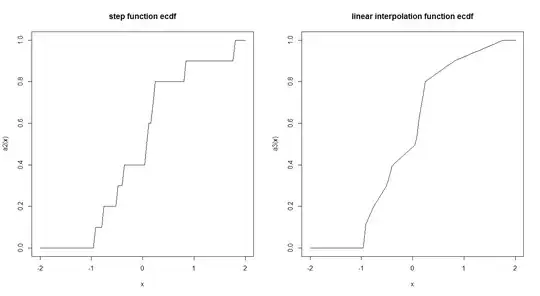Empirical CDF functions are usually estimated by a step function. Is there a reason why this is done in such a way and not by using a linear interpolation? Does the step function has any interesting theoretical properties which make us prefer it?
Here is an example of the two:
ecdf2 <- function (x) {
x <- sort(x)
n <- length(x)
if (n < 1)
stop("'x' must have 1 or more non-missing values")
vals <- unique(x)
rval <- approxfun(vals, cumsum(tabulate(match(x, vals)))/n,
method = "linear", yleft = 0, yright = 1, f = 0, ties = "ordered")
class(rval) <- c("ecdf", class(rval))
assign("nobs", n, envir = environment(rval))
attr(rval, "call") <- sys.call()
rval
}
set.seed(2016-08-18)
a <- rnorm(10)
a2 <- ecdf(a)
a3 <- ecdf2(a)
par(mfrow = c(1,2))
curve(a2, -2,2, main = "step function ecdf")
curve(a3, -2,2, main = "linear interpolation function ecdf")
